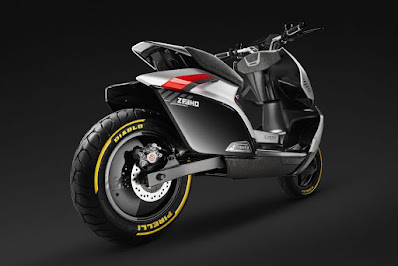Let's Get It On! Recently, classic Porsche lovers were shocked by the latest creation of a Californian's Porsche specialist modification house, named Singer Vehicle Design, which introduced its latest project called the Porsche 911 All-terrain Competition Study (ACS). In this modification project, Singer did not build only one of the classic 1990 Porsche 911 (Type 964) but two cars at the same time with the concept of off road racing.
 |
| Porsche 911 All-terrain Competition Study (ACS) by Singer Vehicle Design. (Picture from: http://bit.ly/3iAFLqz) |
In the process, the American modification house was assisted by Richard Tuthill, a British Porsche 911 rally specialist. In short, the two Porsche 911s were built very seriously to be able to compete and explore off-road tracks.
For the first Parallax White-colored Porsche 911 is built with the concept of high-speed desert rally. While another Corsica Red-colored car was later built for the high-speed tarmac rally car. It could be said that in general, these two Porsche 911 cars are modified to be ready for the off-road competitions, such as the Baja 1000 and the Dakar Rally.
 |
| Porsche 911 All-terrain Competition Study (ACS) by Singer Vehicle Design. (Picture from: http://bit.ly/3iAFLqz) |
Then the optimal changes are made by elevating the car body, installing a longer travel suspension and strengthening the legs and chassis. Furthermore, the entire bodywork is custom made of carbon fiber with easy access to the legs. Because this car will be used for off-road purposes, so there's a 4-wheel drive system with a permanent AWD system is also attached on the cars.
For their power source, on each of these cars use a 3.6L air-cooled flat-six engine coupled with a twin-turbocharger and a water-to-air intercooler system. As a result, Singer claims that its maximum power can reach 450 hp with a ferocious torque number of 569 Nm.
 |
| Porsche 911 All-terrain Competition Study (ACS) by Singer Vehicle Design. (Picture from: http://bit.ly/3iAFLqz) |
While the transmission system uses racing specs sequential (5-speed sequential dog-box), with a limited-slip differential (LSD) at the front, center and rear. For the legs, that the rims use forged aluminum with a spec of 16x8 inches which is then wrapped with the special off-road BF Goodrich A/T tires.
 |
| Porsche 911 All-terrain Competition Study (ACS) by Singer Vehicle Design. (Picture from: http://bit.ly/3iAFLqz) |
And for the car's deceleration system, brakes with 4-piston calipers are used, monoblock disc brakes with hydraulic hand brakes. Because they are made for competition specs, the roll bar and custom seats are made to meet FIA specifications.
 |
| Porsche 911 All-terrain Competition Study (ACS) by Singer Vehicle Design. (Picture from: http://bit.ly/3iAFLqz) |
Then the car's inside, the interior looks dominated by black, silver, and bright red which is also made very functional because the car owner really wants to use this modified classic Porsche 911 for rally racing. Therefore, the cabin of the car is also made like a real racing car, starting from the three-spoke steering wheel with a few buttons at the bottom of the steering wheel. And there is also a large screen on the passenger side for navigation purposes.
 |
| Porsche 911 All-terrain Competition Study (ACS) by Singer Vehicle Design. (Picture from: http://bit.ly/3iAFLqz) |
"We built the car inspired by the Rothmans-sponsored Porsche 911 SC/RS and 959 racing legends in the mid-1980s, then combined it with the latest technology and skills from the Singer team," explained Rob Dickinson, the founder and CEO, Singer Group Inc. in its official release.
Richard Tuthill also added, "This collaboration combines off road cars with the latest innovations and technology inspired by the Porsche legend of the 1980s."
Then there is good news for those whose are interested to change the appearance of their beloved Porsche 911 to be like this, that Singer Vehicle Design is allowed to apply the concept to their next clients. *** [EKA | FROM VARIOUS SOURCES | SINGER VEHICLE DESIGN | CARSCOOPS ]
Note: This blog can be accessed via your smart phone.






























